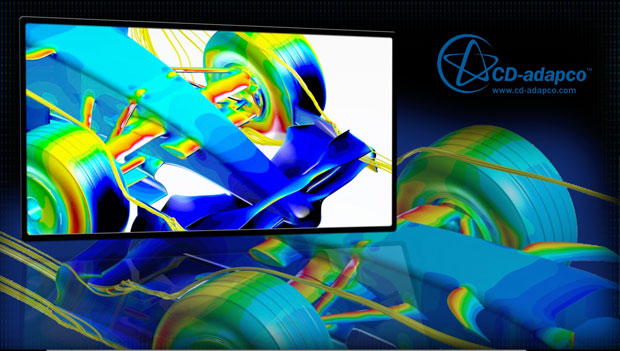
CD-adapco is using its new technology from Panasas to help run CFD simulations, such as this one for Formula One. Image courtesy of CD-adapco.
Latest News
November 2, 2015
 CD-adapco is using its new technology from Panasas to help run CFD simulations, such as this one for Formula One. Image courtesy of CD-adapco.
CD-adapco is using its new technology from Panasas to help run CFD simulations, such as this one for Formula One. Image courtesy of CD-adapco.If you carry a smartphone, go to the doctor, turn on a light, or drive a car, your life is affected by engineering simulation. Simulation allows engineers to test new ideas using software models that mimic the behavior of real-world objects, which greatly simplifies the process of trying out alternatives.
Models are only approximations of the real world. As designers need more accurate simulations, they push the limits of technology. That’s where CD-adapco comes in. The company is developing an approach known as Multidisciplinary Design eXploration (MDX). MDX analysis involves multiple physics domain simulations, all within a single software tool, each addressing a specific part of the problem that allow an engineer combine each domain to simulate the entire system as a whole.
Breaking the Bottleneck
Not surprisingly, MDX demands much higher performance from technical infrastructure. “When we first started doing just CFD analysis by itself a few years ago, a single simulation would stop everything else running on the system,” says Steven Feldman, senior vice president of IT at CD-adapco. His staff traced the problem to legacy network-attached storage (NFS), which could not keep up with the input/output (I/O) requirements of the highly data-intensive CFD (computational fluid dynamics) calculations. Systems that couldn’t keep up with CFD-only analyses had no chance of performing MDX calculations well.
Feldman’s team began its search for a storage system that would eliminate the I/O bottleneck of the existing storage. To avoid overtaxing the company’s thin IT staff, the new system had to be easy to use, highly reliable and backed by additional support.
 CD-adapco uses Panasas storage on a wide range of cluster sizes, from 16 to 112 nodes. Image courtesy of Panasas.
CD-adapco uses Panasas storage on a wide range of cluster sizes, from 16 to 112 nodes. Image courtesy of Panasas.A search of commercial storage vendors led Feldman’s team to develop a short list that included Panasas. Now it was time to put the vendors through their paces. “The Panasas engineers worked together with us on benchmarks that showed the kind of speed improvements we could expect,” says Feldman. Impressed by the benchmark results, Feldman’s team installed a Panasas ActiveStor system to perform a real-world test.
Parallel Data Path Solution
The result? “When we turned on the Panasas system, the bottleneck disappeared,” says Feldman. “We were able to run a complex MDX simulation without significantly impacting other system users.” The reason is performance: The Panasas PanFS storage operating system uses parallel data paths to substantially increase data throughput to and from storage.
One of CD-adapco’s requirements was high reliability; both to ensure that the company could meet its commitments to customers and to avoid overloading busy IT technicians. By this measure, Panasas exceeded expectations. “The new storage system is something we just don’t worry about,” Feldman says. “Once Panasas is up and running, you can just forget about it, which is exactly what we need.”
 According to Steve Feldman, CD-adapco chose Panasas technology due to its ease of use and additional support network. Image courtesy of Panasas.
According to Steve Feldman, CD-adapco chose Panasas technology due to its ease of use and additional support network. Image courtesy of Panasas.No system can run without any manual intervention, but the Panasas system comes close. “Administration for the Panasas storage is almost nonexistent,” Feldman says. “The graphical user interface is easy to understand, so on those rare occasions when we do have to go into the system, it takes very little time away from our other IT assignments.” The CD-adapco team also benefits from exceptional support from Panasas. “When something does break, Panasas fixes it quickly and the system comes right back up,” says Feldman. “Data loss is not something we worry about now.”
Panasas storage may be “forgettable” in operation, but it’s top of mind when CD-adapco needs more storage. “Panasas is deployed on all mission-critical systems,” Feldman says. “We have more than a petabyte of Panasas ActiveStor deployed, with more to come.”
CD-adapco is moving ahead aggressively on a number of fronts, including the design of Formula One racecars. “Formula One pushes automotive technology to its ragged edge,” says Feldman. “Their designers optimize the car’s aerodynamic design for every race track.” Don’t be surprised to see CD-adapco’s racing customers continue to get more than their share of checkered flags in the future.
Below you’ll find a video about the partnership.
More Info:
Subscribe to our FREE magazine, FREE email newsletters or both!
Latest News
Related Topics






